[:de]

Während der Recherche zu meinem Blogpost “Dollmaking Tips # – Puppengesicht” bin ich über ein interessantes Phänomen gestolpert…:
Puppen ohne Gesicht
Aber warum gibt es Puppen ohne Gesicht?
Warum besitzen sie keine Augen, Nase und Mund?
Wir Menschen schauen gerne in Gesichter. Man kann aus ihnen so viel ablesen.
Die Mimik verrät uns die Stimmung unseres Gegenübers. Die Fältchen, sein Alter und Kummer- oder Lachfältchen erzählen von einem fröhlichen oder bewegten Leben. Vor allem Augen werden als “Fenster zur Seele” verstanden. Wir meinen auch in ihnen lesen zu können. Der erste Blick, gilt dem Gesicht. Wir suchen Augenkontakt. Gesichter halten den Blick fest. Wir verschaffen uns in Sekunden einen ersten Eindruck, indem wir das Gesicht anschauen und seinen Mimik interpretieren, noch bevor wir Körpersprache oder Stimme werten können. Hat das gegenüber dann aber z.B. eine Sonnenbrille auf, verbirgt es etwas und verweigert uns vermeintlich das “Lesen” darin – schafft damit Distanz…
Puppengesichter können so Vieles ausdrücken oder in ihrer Zurückgenommenheit auch zur Interpretation und Spiegelung der eigenen Emotionen einladen.
Jedoch besteht auch für mich als Puppenmacherin ein Reiz des völlig “leeren” Gesichts.
Dieses Stadium erlebe ich ja mit meinen Puppen selbst immer wieder. Es ist ein Moment der Entscheidung. Noch kann dieses Gesicht alles beinhalten…und dann bekommt die Puppe ihr Gesicht …und damit “Leben”- es wird für mich auch ihr “Wesen” sichtbar.
Es gibt jedoch auch Menschen, die Puppen völlig ohne Gesichtsmerkmale bevorzugen.
Das kann viele unterschiedliche Gründe haben.
Einige davon möchte ich hier nun einmal kurz aufführen…:
Waldorf
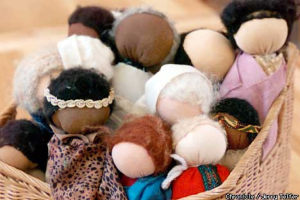
Die Waldorfpuppe ist, verglichen mit herkömmlichen Puppen, ursprünglich in ihrer Gesamtheit wenig stark ausgebildet. Hände und Füße sind nur Knubbel und einzelne Finger und Zehen nicht erkennbar (später jedoch mit Ausnahme der Daumen). Nur die runden Wangen und die Augenlinie definieren die Kopfform. Nase oder gar Ohren besitzt die traditionelle Waldorfpuppe nicht.
Die Waldorfpuppe war ganz ursprünglich gesichtslos.
Später bekam sie einen nur sehr zurückgenommenen Gesichtsausdruck: meist nur drei Striche, jeweils für Augen und Mund.
Klassischerweise wurde auch die Nase ganz weggelassen. Das Gesicht wurde dann mit Buntstift aufgemalt, der bald wieder verblassen konnte. Später wurde das Gesicht gestickt oder permanente Farbe verwandt. Zumindest Augen besaßen diese Puppen dann immer. Der Mund, wenn vorhanden, wurde nach wie vor nur mit einem schmalen Strich angedeutet. So soll vermieden werden, durch die dargestellte Mimik einen bestimmten Gemütsausdruck zum Ausdruck zu bringen. Der Waldorfpädagogik zufolge ist dies nämlich dem spielenden Kind vorbehalten.

“Verbindet sich das Kind in zärtlicher Liebe und Hingabe mit seinem Puppenkind, so regt sich in ihm ein Bild des Menschen, das wie ein Keim in seiner Seele ruht, um dessentwillen es den Weg zur Erde genommen hat. Da aber sein ganzes Wesen noch so keimhaft in ihm schlummert, sollte auch die Puppe in ihrer äußeren Ausgestaltung so ‘keimhaft’ wie möglich sein. Um so mehr aber sollte das Kind eine ‘Seele’ in ihr entdecken, die es lieben kann, und mit der es in seiner Phantasie geheime Zwiesprache halten kann.”¹
Ist eine Puppe hingegen in ihrer Mimik bereits festgelegt, wie die immer lächelnden Plastikpuppen der Moderne, wird der Waldorfpädagogik zufolge dem Kind die Möglichkeit genommen ihr im Spiel andere Rollen und Gefühle zuzuweisen. Es fällt Kindern schwer, beispielsweise in das lachende Puppengesicht ein trauriges (eigenes) Gefühl zu interpretieren.
Die Waldorfpuppe soll also durch das Weglassen von Mimik, so der kindlichen Fantasie viel Raum lassen. Die Puppe wird damit Projektionsfläche für die eigenen Gefühle und Wünsche des Kindes: So kann sie in einem Moment traurig oder wütend sein, eine weinende Babypuppe und im nächsten Moment selbst das Kind trösten und aufmuntern oder Lachen und sich mit ihm freuen. Das Kind sieht so in der Puppe immer das, was es gerade möchte und in seinem Spiel braucht.
¹ aus: “Wir arbeiten Puppen für unsere Kinder”, Gertraud Sternke
Puppen des Dominikanischen Kunsthandwerks
Eines der bekanntesten Symbole der Karibikinseln der Dominikanischen Republik ist das, was im Volksmund als “gesichtslose” Puppe, auch Limespuppe* genannt, bekannt ist.
Es handelt sich dabei um eine Puppe, die verschiedenen Arten von Kleidung tragen kann und aus einer großen Auswahl an verschiedenen Materialien gefertigt wird, angefangen von feinem Porzellan über Kokos und Ton, in verschiedenen Farben.
Die Karibik-Puppe aber hat ein Gesicht welches keine Gesichtsmerkmale aufweist.
In der Dominikanischen Republik leben Menschen aus den verschiedenen Teilen der Welt. Einige sind spanischer Abstammung, einige sind französischer Herkunft und andere haben afrikanischen Vorfahren, neben vielen anderen aus verschiedenen Kulturen und Religionen.
“Da es Dominikaner in allen Facetten, Hautfarben und Gesichtsformen gibt, die das Jahrhundertelange Zusammenleben von Europäern, Indios und Afrikanern hervorgebracht hat, lässt man das Gesicht unmodelliert, als stolzes Bekenntnis zum Multikulturalismus.”
Die gesichtslose Puppe steht vor diesem Hintergrund als Symbol der allumfassenden Kultur. Sie steht für Akzeptanz gegenüber allen Menschen und deren ethnischen Hintergründen und soll eine integrative Gesellschaft symbolisieren.
Diese Puppe zeigt auf, dass das Land so viele verschiedene Menschen zusammengebracht hat, welche nun eine große Familie sind.
Eine andere mögliche Erklärung für die Gesichtslosigkeit der Puppe ist jene, dass es sich bei den Puppen um “Machantas” handeln soll. Machantas kommt wohl vom englischen Wort merchant, also Händler. So wurden nämlich damals die Frauen in der Dominikanischen Republik gennant, die ihre Waren in den Städten und Dörfern von Tür zu Tür trugen und alle feil boten was die Einwohner für ihr tägliches Leben brauchten.
Bis heute bleiben diese wandernden Frauen für immer namenlos und gesichtslos für alle Menschen, die ihre Produkte seit Jahren gekauft haben. Um diese “Machantas” zu ehren, gibt es seitdem diese Puppen.
*(made in Santiago by the Lime (le-mea’) factory)
Amish-Puppen
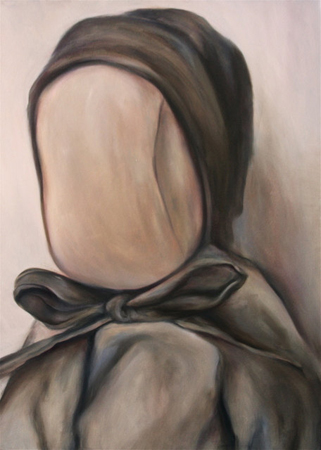
Die Puppen der Amish Leute sind weithin bekannt. Eines der markantesten Merkmale der Amish-Puppen ist, dass sie keine Gesichtszüge haben.
Die Quellen sind nicht eindeutig in den Aussagen zu dem Ursprung dieser Tradition. Nicht jede Amish Puppe ist gesichtslos, aber die traditionellen sind die bekanntesten.
Wahrscheinlich ist die Gesichtslosigkeit mit verschiedenen Faktoren zu begründen, welche aber zumeist auf die strenge Religiosität zurückzuführen sind.
In den meisten Amish Häusern gab es immer nur wenig Spielzeug für Kinder. Einige Spielzeuge, wie Puppen, entstanden durch Umwickeln von Holzstücke mit Stoffen. Es gab also nur wenig Spielzeuge daher spielten sowohl Jungen als auch Mädchen mit ihnen.
Es ist davon auszugehen, dass sich aus diesen ersten improvisierten Holzbabypuppen die gesichtslosen Amish-Puppen entwickelt haben.
Einer der wichtigsten Grundsätze der Amish besagt zudem, dass alle Menschen gleich sind in den Augen Gottes und somit auch als Gleiche behandelt werden sollten. Wenn eine Puppe also kein Gesicht besitzt, ist sie frei von Identität und stärkt damit das Verständnis von Gleichheit sowohl innerhalb der Amish-Gemeinde und, in einem größeren Zusammenhang, auch den der menschlichen Rasse.
Einer der Gründe dafür ist, dass das biblischen Buch Deuteronomium die Schaffung von Götzen verbietet. Die Puppen der Amish sind also immer generell ohne Gesicht gearbeitet, da in der Amish Kultur das Abbilden vom Mensch in jeglicher Form untersagt ist. Nur Gott ist es gestattet, die Menschen abzubilden. Auch Kleidung und Farben der Puppen sind einfach und zurückhaltend gestaltet. Eine Puppe ohne Gesicht ist kein Abbild des Menschen. Diese zu besitzen ist somit also keine Sünde.
Eitelkeit und Stolz hingegen sind Sünden. Viele Amish glauben, dass Abbilder, wie auch Fotos es sind, nur die Eitelkeit schüren und diese sind daher verboten. Ähnlich zu betrachten ist die Schaffung einer Puppe, die dem Menschenbild ähnelt. Sie zeigt ein ideales Bild der menschlichen Form und könnte Kinder verleiten sich nach einem solchen Ideal zu richten.
Puppen ohne Gesicht sind also die Bekräftigung der Bescheidenheit der Amish.
Sehr interessant in diesem Zusammenhang auch die Information aus erster Hand,
in diesem Interview mit einer Amish-Puppenmacherin:

“[…] Faceless dolls, however, have become popular in pop culture regarding the Amish and that bumped up their popularity among some Amish. It is interesting in the interview that the Amish woman stresses that the collectors are really the ones that don’t want the faces on the dolls. […]”
& ein Video: “Amish dolls without faces”:
- facelessfriends.com
- Amish dolls without faces
- amishreligiousfreedom.org/amishfaq.htm#face
- The Amish Doll
- welcome-to-lancaster-county.com/amish-dolls
- Why Don’t Amish Dolls Have Faces?
- Portal: Amish-Leute
- Friends Patterns – online source of Sewing Patterns for Amish and Plain Clothing
- “Amish Doll Patterns”, by Jan Mast
Deenie Puppen
Seit 2014 gibt es die so genannte “Deenie Doll” auf dem Markt.
Zielgruppe sollen strikt gläubige muslimische Familien sein. Die Puppe steht mit ihrer gesichtslosigkeit im Einklang mit der religiösen Lehre, die ein Abbild des Menschen verbietet.
Die Puppe entstand nach einer Idee von Ridhwana B., einer ehemaligen Lehrerin an einer muslimischen Schule. Die Puppe entstand zudem ganz in Einklang mit der Scharia Lehre.
Benannt ist die Puppe “Romeisa”, nach einem Begleiter des Propheten Mohammed und kostet im Einzelhandel £ 25.
Im Gespräch mit ihrer Lokalzeitung äußerte sich Ridhwana B:
“There is an Islamic ruling which forbids the depiction of facial features of any kind and that includes pictures, sculptures and, in this case, dolls[…] Some parents won’t leave a doll with their children at night because you are not allowed to have any eyes in the room. The Islamic range in kids’ toys is quite limited at the moment, with few choices.”
Der Sinn einer solchen Puppe wurde jedoch seitdem weitum kritisch diskutiert.
- Sunnah-style-dolls
- Muslim ”Deeni Doll” debuts in the U.K. without a face
- ‘Islamic doll’ for children launched in Britain with no FACE
- aishadolls.com
Maisstroh-Puppe
Maisstrohpüppchen bekamen traditionell zwar Arme und Beine, aber kein Gesicht. Sie werden deshalb auch „Puppen ohne Gesicht“ genannt.
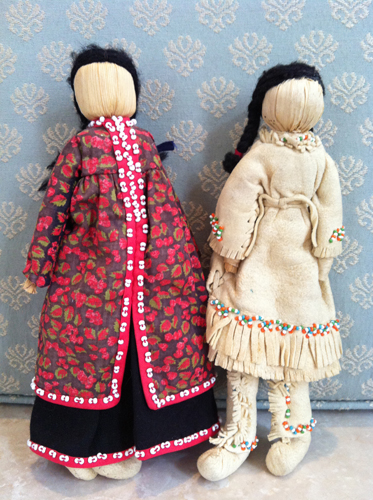 Man glaubte, dass alle Gegenstände, die ein Gesicht hatten, auch eine Seele besaßen und durch das Gesicht sehen konnten. So wäre es möglich gewesen, dass sich eine beim Spielen beschädigte Puppe mit Gesicht an den unachtsamen Kindern rächen oder ihnen hätte schaden können. Deshalb versuchte man die Kinder zu schützen, indem man ihnen bevorzugt Puppen ohne Gesicht schenkte.
Man glaubte, dass alle Gegenstände, die ein Gesicht hatten, auch eine Seele besaßen und durch das Gesicht sehen konnten. So wäre es möglich gewesen, dass sich eine beim Spielen beschädigte Puppe mit Gesicht an den unachtsamen Kindern rächen oder ihnen hätte schaden können. Deshalb versuchte man die Kinder zu schützen, indem man ihnen bevorzugt Puppen ohne Gesicht schenkte.
Maisblattpuppen mit aufgemaltem Gesicht mussten von den Kindern beim Spiel mit großem Respekt behandelt und vor jeder Verletzung bewahrt werden, damit „die Seele der Puppe unversehrt blieb“.*
Eine Legende der Ureinwohner Amerikas besagt zudem, dass es einmal drei Geister zum Erhalt des Lebens gab. Diese drei Schwestern waren Mais, Bohnen und Kürbis.
Der Mais Geist wollte noch mehr für die Menschen tun und fragte den großen Geist, was er tun könnte. Dieser sagte ihm aus seiner Schale könne eine Puppe gefertigt werden. So machte also der Maisgeist eine Puppe und gab ihr das schönste Gesicht.
Dann wanderte die Puppe von einem Dorf zum anderen und spielte dort mit den Kindern. Und überall, wo die Puppe hin kam, wurde ihr gesagt wie schön sie doch sei. So dauerte es nicht lange und die Puppe wurde immer eingebildeter.
Eines Tages rief der große Geist sie zu sich, doch auf dem Weg zu ihm, erblickte die Puppe ihre Reflektion in einem See, blieb stehen und bewunderte ihre eigene Schönheit ausgiebig.
Ihre Eitelkeit gefiel dem großen Geist nicht und obwohl er sie zur Demut ermahnte wurde die Puppe immer eitler. Schließlich traf sie seine Strafe und als sie abermals zum großen Geist gerufen wurde und sich an dem See selbst bewundern wollte, erschrak sie – denn der Geist hatte ihr das Gesicht genommen. Seit dem war sie nur die Maisschalenpuppe ohne Gesicht.
Diese Legende erinnert die Menschen zudem daran sich nicht selbst für etwas besseres zu halten und nicht der Eitelkeit und Selbstverliebtheit zu verfallen, da auch sie sonst eine große Strafe ereilen sollen.
Der Stamm der Irokesen glaubte somit Puppen mit Gesichtern würden ihre Mädchen nur zur Eitelkeit erziehen.
- Maiskolbenblätter-Puppe basteln
- Corn husk dolls
- How To Make A Corn Husk Doll
- *Arbeitsanleitung zur Herstellung eines Maisstrohpüppchens im Stil der Irokesen-Völker

Es gibt auch Eltern die denken, Kinder brauchen überhaupt keine Puppen. Es gibt meist auch hier religiöse Gründe dafür. Einige möchten keine Puppen aus kulturellen Gründen, sie finden es zum Beispiel aus schamgründen nicht gut, wenn Kinder diese entkleiden.
Manch einer meint sicher, diese Eltern machen sich vielleicht zu viele Gedanken. Auf der anderen Seite gibt es aber sicherlich auch Eltern, die sich überhaupt keine Gedanken über die Art des Spielzeugs ihrer Kinder machen und diese mit Barbies und Pistolen spielen lassen.
In diesem Zusammenhang übrigens auch interessant dieser Artikel hier.
Bei meiner Recherche bin ich zudem auch über diese Aussage gestolpert:
Angeblich ist/war es in Frankreich gesetzlich verboten Puppen ohne Gesicht zu verkaufen?!
(Mich würde interessieren ob das stimmt- Wenn jemand weiss, ob das so ist/war schreibt es doch bitte in die Kommentare.)
Ich hoffe dieser Blogpost konnte ein wenig Einblick vermitteln, in die vielen Arten von gesichtslosen Puppen sowie den möglichen Beweggründen hinter solch einer Art Puppen.
Falls ihr übrigens dazu noch Ergänzungen, Anmerkungen oder Fragen habt, schreibt dies wie immer bitte auch in die Kommentare…[:en]

As I did the research for my blog post “Dollmaking Tips # – Puppengesicht” I stumbled upon a very interesting phenomenon on its own..:
Dolls without Faces
But why are there faceless dolls anyway?
Why do they miss all facial features like eyes nose and mouth?
People like to look at faces. You can read so much out of them.
The facial expression can tell us a lot about the mood of our counterparts. The wrinkles can speak of age and sorrow, or laugh lines tell us about a cheerful or eventful life. Especially eyes are understood to be the “windows to the soul”. We believe to be able to read something about the other in them. Our first glance is targeted at the face. We are maybe even looking for eye contact. Faces keep our eyes fixed on them. We gain a first impression in seconds, we look at the face and its expressions and interpret them accordingly, even before we can evaluate body language or voice. If the opposite is wearing sunglasses though, it seems to us he is trying to hide something thus creating distance…
For me as a dollmaker of course doll faces are essential. You can express so much through the way you create the eyes and mouth of a doll. The doll face can be inviting for interpretation and reflection of one’s own emotions. However, I understand the allure of completely “blank” face very well also. As I do experience this stage of dollmaking with my dolls repeatedly. It is a moment of decision. Still, this face can become so much… and when a doll finally gets her face … it really comes to “life”. At least for me the “essence” of this doll then becomes visible.
However, there are also people who prefer dolls without any facial features. This may have many different reasons. Some of them I would like to now briefly try to list below …:
Waldorf Dolls

The Waldorf doll is, compared to conventional dolls, originally less developed in its entirety. Hands and feet are just limbs and individual fingers and toes unrecognizable (later on with the exception of the thumbs). Having only the round cheeks and eyes line defining the heads shape. The traditional Waldorf doll does not have a nose or ears.
The original Waldorf doll was faceless.
Later, it got a very withdrawn facial expression: usually only three strokes, each for the eyes and mouth. Classically, the nose was completely omitted. The face was painted with colored pencil which could soon fade away again.
Later on, the face was even embroidered or painted on with permanent color. At least these dolls then always had eyes. The mouth, when present, was still only indicated with a thin line. This way the doll would not show a certain emotional expression as defined by the dollmaker beforehand. Rather any expression of emotion on the dolls face should be avoided. According to the Waldorf education, this is namely subject to the playing child.

“Verbindet sich das Kind in zärtlicher Liebe und Hingabe mit seinem Puppenkind, so regt sich in ihm ein Bild des Menschen, das wie ein Keim in seiner Seele ruht, um dessentwillen es den Weg zur Erde genommen hat.
Da aber sein ganzes Wesen noch so keimhaft in ihm schlummert, sollte auch die Puppe in ihrer äußeren Ausgestaltung so ‘keimhaft’ wie möglich sein.
Um so mehr aber sollte das Kind eine ‘Seele’ in ihr entdecken, die es lieben kann, und mit der es in seiner Phantasie geheime Zwiesprache halten kann.”¹
Nowadays a doll often already has a fixed facial expressions, such as the always smiling plastic dolls you can buy everywhere. But according to the Waldorf pedagogy with such dolls the child is being deprived of the opportunity to assign different roles and feelings to the doll itself in its play. It is believed that it may be more difficult to children, to interpret for example the sad (own) feelings in the laughing doll’s face.
The Waldorf doll should therefore have little to no facial expressions, this way it is left to the child’s own imagination how the doll is “feeling”. The doll is thus a projection screen for the childs own feelings and wishes: So the doll can be in a sad or angry mood at the same time, as being a crying baby doll and even give comfort in the next moment. So the child and its doll will cheer or laugh and be happy together if the child wants it to. Having no set facial expression the is giving the child the opportunity to always only see what it wants and needs in its own play at that time through the doll.
¹ aus: “Wir arbeiten Puppen für unsere Kinder”, Gertraud Sternke
Dominican Republic faceless dolls
One of the most recognizable symbols of the Caribbean islands of the Dominican Republic is what popularly is known as the “faceless” doll or also called Limes Doll*.
This doll can wear different kinds of clothes and is made of a wide range of different materials ranging from fine china to clay, coming in all different colors. But the Caribbean doll has a face that has no facial features.
In the Dominican Republic, people from all different parts of the world are living together. Some are of Spanish descent, some are of French origin and others have African ancestors, among many others from different cultures and religions.
“Since there are Dominicans in all facets, skin colors and facial shapes, which has spawned a long coexistence of Europeans, Indians and Africans through the centuries, the unmodulated face can be understood as a proud commitment to multiculturalism.”
The faceless doll is to be understood as a symbol of universal culture. It represents acceptance of all people and their ethnic backgrounds and stands for an inclusive society. This doll shows that the country has brought together so many different people, who have now become one big family.
Another possible explanation for the lack of facial features of the doll is, that it may be a tribute to the “Machantas”. Machantas probably comes from the english word merchant. The women carrying their goods in the towns and villages from door to door and selling what was needed to residents for their daily lives. To date, these wandering women remain nameless and faceless forever for all people who bought their products for years. In honor of this “Machantas” these faceless dolls were made.
*(made in Santiago by the Lime (le-mea’) factory)
Amish Dolls

One of the most distinctive features of the Amish dolls is that they have no facial features. The sources are not clear in the statements about the origin of this tradition. Not every Amish doll is faceless, but the traditional without are the best known. Probably the facelessness can be explained by various factors, one being mostly due to the strict religiosity.
In most Amish homes there have always been only few toys for children. Some toys, such as dolls, were created by wrapping timber into cloths. And because there were few toys the dolls were played with by both boys and girls. It may be assumed that the faceless Amish Dolls may have evolved from these first improvised wooden baby dolls.
One of the main principles of the Amish is that all men are equal in the eyes of God and should therefore be treated as the same. Thus, when a doll has no face, it is free of identity, thus strengthening the understanding of equality both within the Amish community and, in a wider context, also to the human race.
Another reason for the faceless dolls is that the biblical book of Deuteronomy forbids the creation of idols. The dolls of the Amish are therefore generally always worked without a face, because in the Amish culture depicting the human in any form is prohibited. Only God is allowed to depict the human. A doll without a face is no image of men. Having such a doll therefore is not a sin.
Also clothes and colors of dolls are designed simple and modest just like the ones the Amish wear.
Vanity and pride, however, are sins. Many Amish believe that images, as well as photos, are only fueling the vanity and are therefore prohibited. Similarly considered is creating a doll that resembles the image of men. It shows an ideal image of the human form and therefore could entice children to such an ideal. Dolls without faces are thus affirming the value of modesty of the Amish.
Very interesting in this context is this interview with an Amish doll maker which gives information on the subject firsthand…

“[…] Faceless dolls, however, have become popular in pop culture regarding the Amish and that bumped up their popularity among some Amish. It is interesting in the interview that the Amish woman stresses that the collectors are really the ones that don’t want the faces on the dolls. […]”
& a Video: “Amish dolls without faces”:
- facelessfriends.com
- Amish dolls without faces
- amishreligiousfreedom.org/amishfaq.htm#face
- The Amish Doll
- welcome-to-lancaster-county.com/amish-dolls
- Why Don’t Amish Dolls Have Faces?
- Friends Patterns – online source of Sewing Patterns for Amish and Plain Clothing
- The Love of the Amish Faceless Doll by Elinor Santerian Hare
- Patterns for Making Amish Dolls and Doll Clothes Jan Steffy
- Amish Doll Patterns: An Amish Family and Friends by Jan Steffy Mast
Deenie Dolls
Since 2014 there is the so-called “Deenie Doll” produced in accordance with Islamic law, which has been launched in Britain. The “Deeni Doll” is clothed in a traditional hijab headdress and its face is entirely blank, in order to comply with Islamic restrictions on the depiction of facial feature.
The doll was created from an idea by Ridhwana B., a former teacher at a Muslim school.
The doll also is made in line with the sharia rules. It is named “Romeisa”, after a companion of the Prophet Muhammad and retails £ 25.
In an interview with her local newspaper is Ridhwana B said:
“There is an Islamic ruling which forbids the depiction of facial features of any kind and that includes pictures, sculptures and, in this case, dolls[…] Some parents won’t leave a doll with their children at night because you are not allowed to have any eyes in the room. The Islamic range in kids’ toys is quite limited at the moment, with few choices.”
The purpose of such a doll has however since been critically discussed.
- Sunnah-style-dolls
- Muslim ”Deeni Doll” debuts in the U.K. without a face
- ‘Islamic doll’ for children launched in Britain with no FACE
- aishadolls.com
Corn Husk Dolls
Traditionally corn husk dolls have arms and legs, but no face. They are therefore referred to as “dolls without a face”.
 It was believed that all items that had a face, also possessed a soul and could therefore see. So it would have been possible that a doll with a face which was damaged in play will eventually avenge the unwary children and could have them hurt. Therefore, they tried to protect the children and by preference gave them dolls without faces. Corn husk dolls with painted faces had to be treated by the children at play with great respect and be protected against any violation, so “the soul of the doll remained intact”. *
It was believed that all items that had a face, also possessed a soul and could therefore see. So it would have been possible that a doll with a face which was damaged in play will eventually avenge the unwary children and could have them hurt. Therefore, they tried to protect the children and by preference gave them dolls without faces. Corn husk dolls with painted faces had to be treated by the children at play with great respect and be protected against any violation, so “the soul of the doll remained intact”. *
Another possible explanation for these dolls having no face can be found in this legend told over generations about a vain doll losing its face as a punishment:
“The Iroquois people have what they call the three sisters, the “sustainers of life”.
These sisters are called corn, beans, and squash.
The corn Spirit was so thrilled at being one of the sustainers of life that she asked the Creator what more she could do for her people.
The Creator said that a beautiful doll could be formed from the husks. The Creator set to work to form the doll. When finished he gave the doll a beautiful face, and sent it to the children of the Iroquois people to play with, and to make them happy.
The doll went from village to village playing with the children and doing whatever she could for the children. Everywhere she went everyone would tell her how beautiful she was, so after a while she became vain.
The Creator spoke to her and explained that this was not the right kind of behavior, and she agreed not to be this way anymore. The Creator told her that if she continued with this behavior he would punish her, but he would not tell her how he would do it. She agreed not to act that way again, and things went on as before.
One afternoon she was walking by a creek and she glanced into the water.
As she admired herself, she couldn’t help thinking how beautiful she was, because indeed she was beautiful.
At this time Creator sent a giant screech owl out of the sky and it snatched her reflection from the water. When she looked again, she had no reflection.
This was the punishment the Creator put upon her.
When an Iroquois Mother makes a doll for her child, she tells them this legend. This is to remind the child that it is wrong to think they are better than any one else, and they must know that the Creator has given a special gift to everyone.”
(Source: http://www.snowwowl.com/naartcornhuskdolls.html )

There are parents who think children need no dolls at all. There are usually also referring to religious reasons.
Some do not want dolls for cultural reasons, they find it, for example, shameful when children undress the dolls. Many may think for sure these parents might worry too much.
On the other hand, there are certainly a lot of parents who do not worry about the nature of the toy of their children have at all and therefore maybe let them play with Barbie and toy guns all the time.
In this context also here is an interesting article.
During my research I also stumbled upon this statement:
Allegedly it is/was prohibited by law to offer faceless dolls for sale in France?!
(I would like to find out if this is true at all – So if anyone knows whether this is a fact, please let me know by writing in the comments.)
I hope this blog post could give a little insight into the many types of faceless dolls, and the possible motives behind such kind of dolls.
If you have additions to make, comments or questions concerning this subject, please do so in the comments section below…[:]
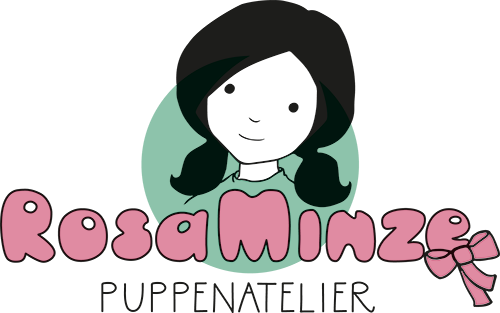

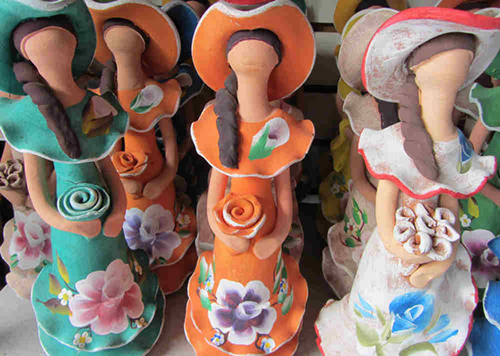







J’aime beaucoup.
Merci! ;)